WORLD TRAVEL NEWS ARTICLE


NEW YORK STATE, U.S.A.
NEW YORK STATE, U.S.A.
'NEW YORK STATE & NEW YORK CITY'
New York State on the Midatlantic coast covers 127,190 square kilometres (49,108 square miles), including Long Island and the Hudson River Valley. After California, this is the second most highly populated state – the figure swelled by the vast population of New York City.
From the Appalachian Mountains in the northwest, the Adirondacks of the northeast and Catskill Mountains to the south, New York State – named for the 1664 Duke of York, brother to King Charles II – offers lovely mountain scenery interspersed with some 2,000 and more lakes. Lake Erie, Lake Ontario, the St Lawrence River and Canada mark the state borders. The serenity of the pastoral regions contrasts sharply with the extensive sprawl of the cities.
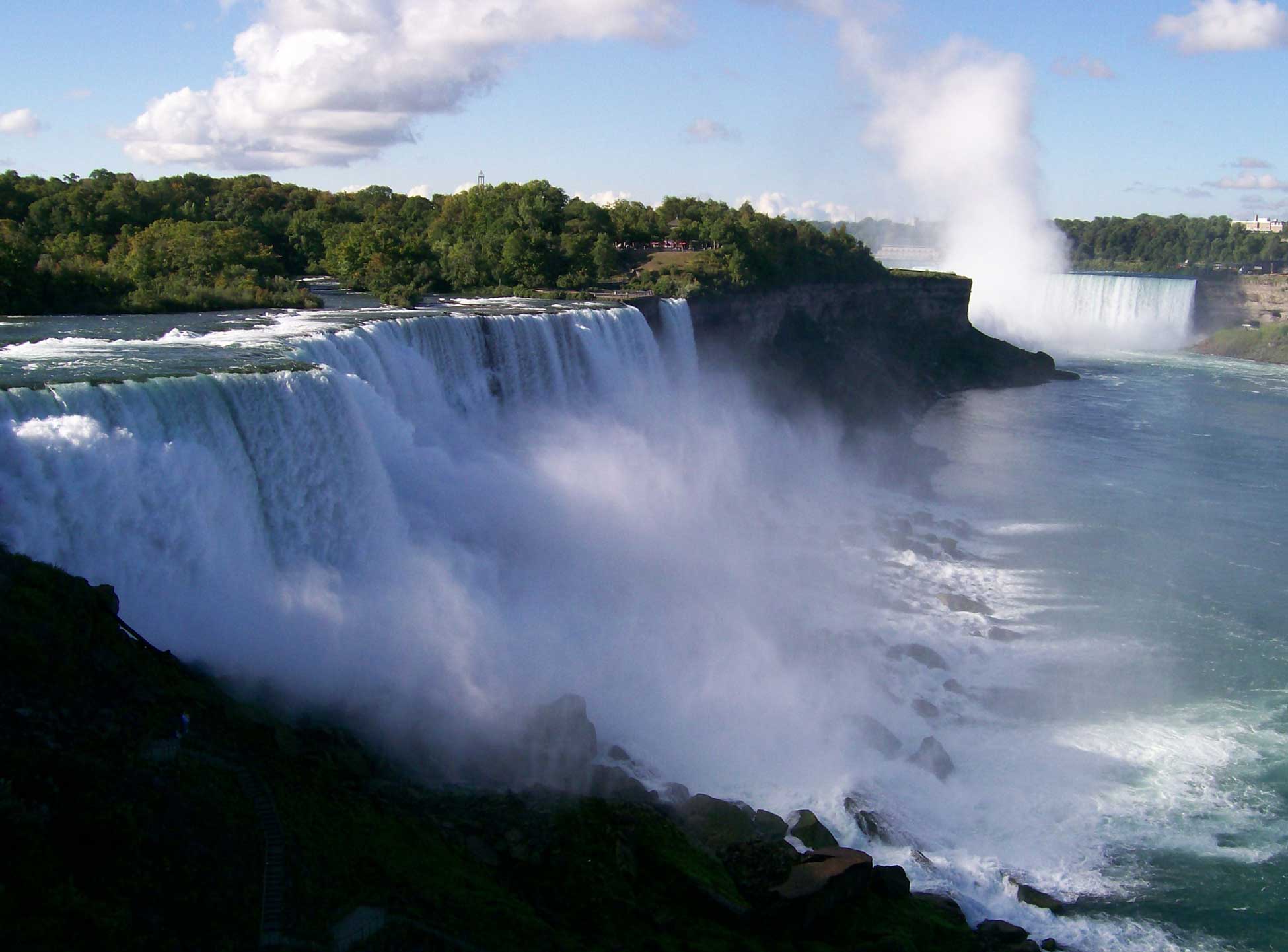
The Niagara Falls
The state’s most visited attraction, the Niagara Falls, straddles the border and is shared with Canada. Erosion continues at a rate of about an inch a year, as the falls slide imperceptibly upstream. From the American side, the falls are 56 metres (184 feet) high and 675 metres (2,215 feet) wide with a drop of 97 metres (320 feet) over 48 kilometres (30 miles). Water has been tapped for hydroelectric schemes that illuminate Niagara Falls by night. Bridges over the gorge have been constructed and Rainbow Bridge is a pedestrian bridge for visitors who can also take in the State Park and view the falls from the Observation Tower. Alternatives are to take an elevator or a boat ride, both of which aim to let viewers see as much as possible.
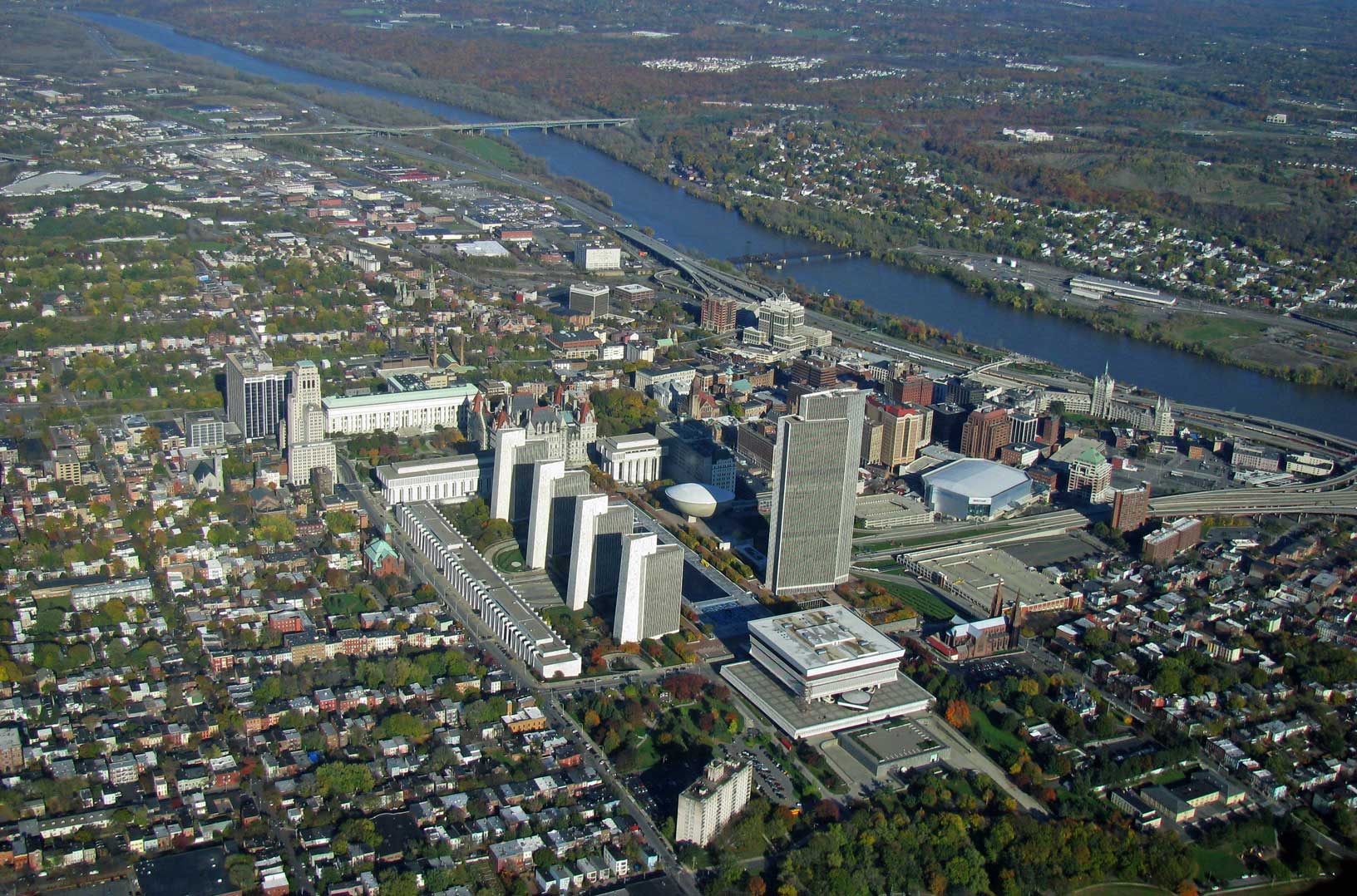
An aerial view of Albany
Albany is the State Capital, and it is the oldest city in the country that still operates under its original charter of 1686. Albany’s vast State Capitol resembles a French chateau and it is one of the loveliest buildings in the city. Some 209 kilometres (130 miles) north of New York City, Albany is situated on the Hudson River, which was first navigated by Henry Hudson in 1609.

Sail boat on the Hudson River
The Hudson River rises in the Adirondack Mountains and flows 492 kilometres (306 miles) south to the Atlantic at New York City. Ocean-going vessels can sail up to Albany, where the New York State Barge Canal connects with the Great Lakes and the St Lawrence River to make an impressive waterway system that stretches through to Buffalo.

Buffalo, New York in bloom.
Started in 1818, it was New York’s Governor, De Witt Clinton, who was the person mainly responsible for its success as he issued bonds to fund the scheme. On completion in 1825, the Erie Canal ran for an incredible 586 kilometres (364 miles); it was 12 metres (40 feet) wide, 1.2 metres (4 feet) deep and comprised 84 locks. The first of many subsequent canal systems to be introduced, the Erie Canal brought about the growth of New York City, as it became the commercial centre for the country. The Erie Canal Museum traces this engineering miracle and can be visited at Syracuse.
The Adirondack Mountains occupy almost a quarter of the state and include the 1,629-metre (5,344-feet) high Mount Marcy. There is a fine Adirondacks Park, which when created was the country’s first forest reserve, and which has informative visitor centres at either end.
Cornell University is at Ithaca, from where you can also visit the Finger Lakes.
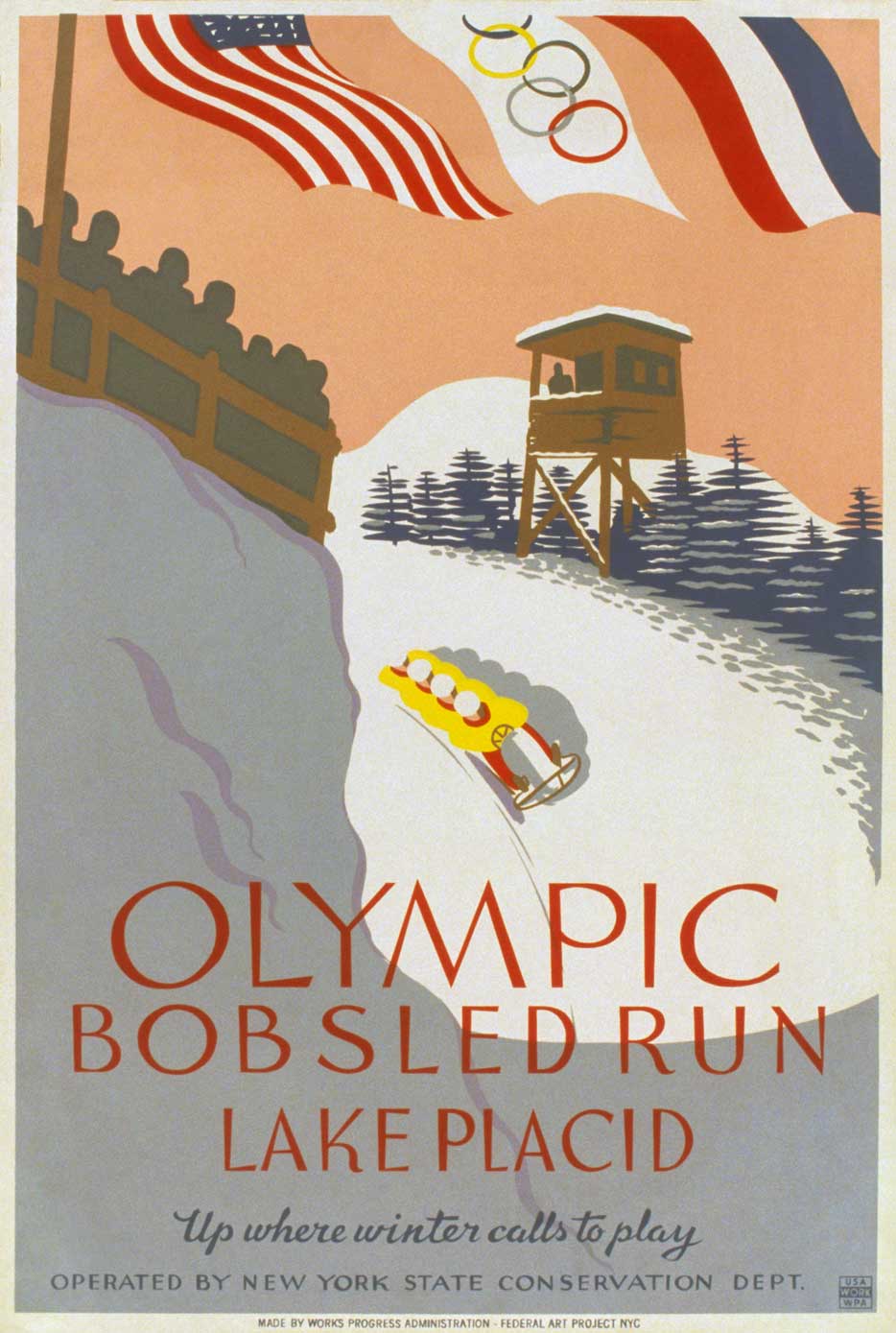
Poster from the Olympics of 1980
Lake Placid Village is a vast winter sports training centre, home to the 1980 Winter Olympics and a popular winter destination.
The famous West Point Military Academy in the Hudson Valley has an attached museum of interest to visitors. In the Valley area is the enormous Vanderbilt Mansion in Hyde Park. The former home of the Railroad King, it is lavish in the extreme, with very fine antique furniture, art and tapestries.
New York City has the greatest population of any city in North America and it spreads over into Connecticut and New Jersey. On the southern point of the state, at the mouth of the Hudson River on Manhattan Island, this vast metropolis was once a trading post used by the Dutch, who were the first of the millions to settle here, in 1612,. Nowadays there is the greatest cultural diversity of anywhere on earth, as nearly 200 ethnic groups live alongside one another, bringing their own cuisine to this city renowned for its variety of eating places.
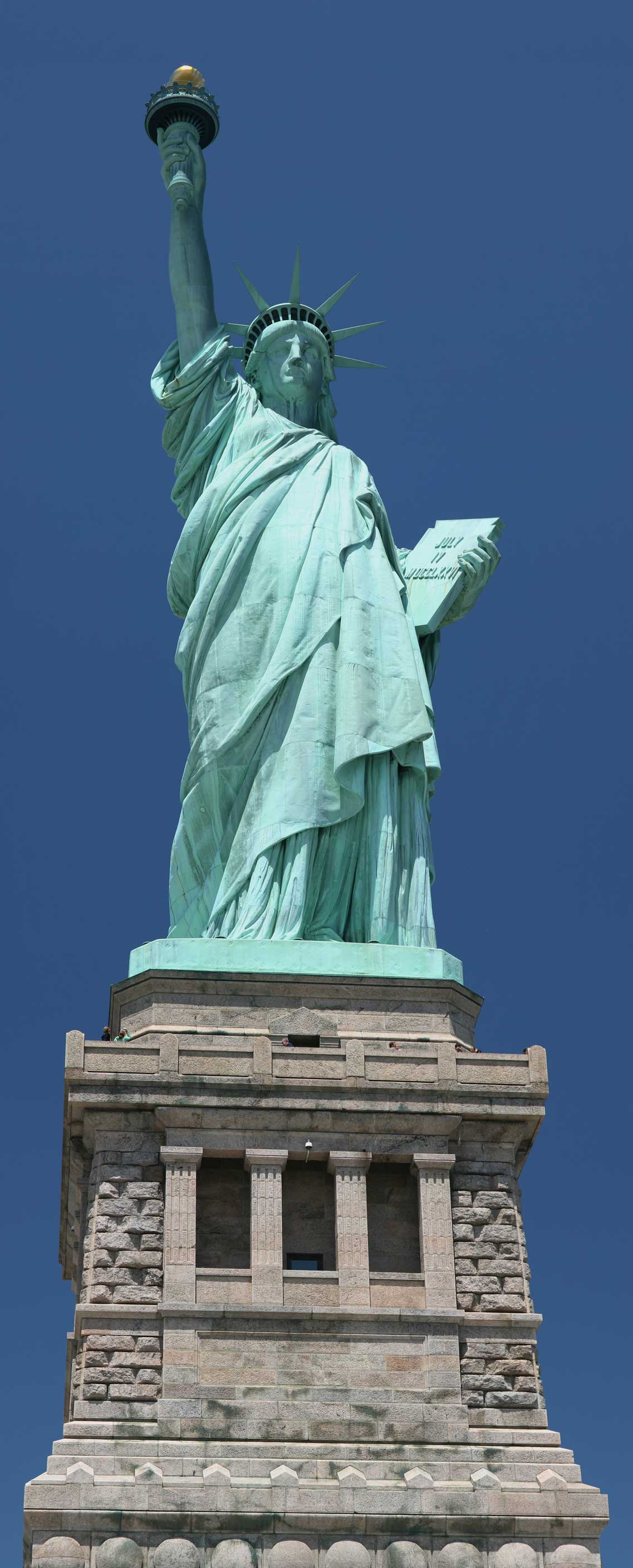
The Statue of Liberty
The Statue of Liberty – the emblem since 1886 of entry to a New World and a New Life – is a 93 metre (305-feet) tall poignant reminder of the hope that this much-loved monument conveyed to immigrants arriving here to start afresh. A torch held in one hand and the 4th July book in the other, Liberty is special indeed.
Ground Zero, scene of the 11th September 2001 terrorist plane attacks when the Twin Towers were destroyed, is the other emotive place to visit. A memorial is planned, but at the time of writing you are restrained in a viewing area because of the construction work that is being carried out here.
Greenwich Village lured and continues to lure artists, poets, writers and dancers to its Bohemian lanes. In the early years of the 1900s there was an undercurrent of excitement here, a breathtaking sense of imminent change and reform, of hope and progress, which stemmed from the arrival of talented people and their art. Isadora Duncan and Ruth St Denis revolutionised the world of dance. In 1913, the New York Armory exhibited a huge array of modernist paintings, prints and sculptures featuring works of Picasso, Cezanne, Matisse, Van Gogh and Gauguin.
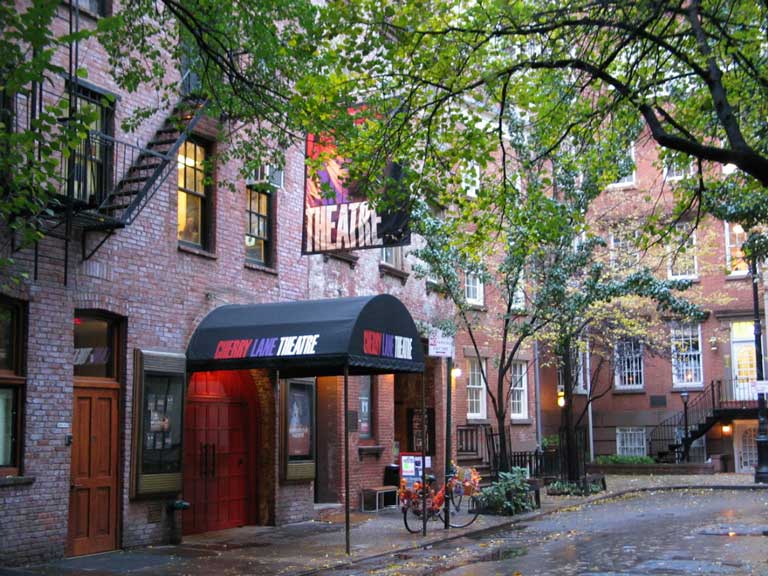
Cherry Lane Theatre in Greenwich Village
As art flourished, so New York City politics grew ever more corrupt. In the wake of the population explosion, the city’s needs developed and the political machine became extremely powerful. ‘The House That Tweed Built’ is the New York County Courthouse in City Hall Park, downtown Manhattan, that cost over $13 million to build in the mid-1800s because of false accounting and double and even treble entries for the self-same building materials.
Corruption was so commonplace that the New York City Treasurer, John Kelly, became known as ‘Honest John Kelly’ because of the rarity of this admirable characteristic. Fellow politician George Washington Plunkitt coined the phrase “honest graft”, referring to legitimate profits that could be taken. Plunkitt also advocated helping the poor on the basis that “it is philanthropy, but it is politics too – mighty good politics, as the poor are the most grateful people in the world”.
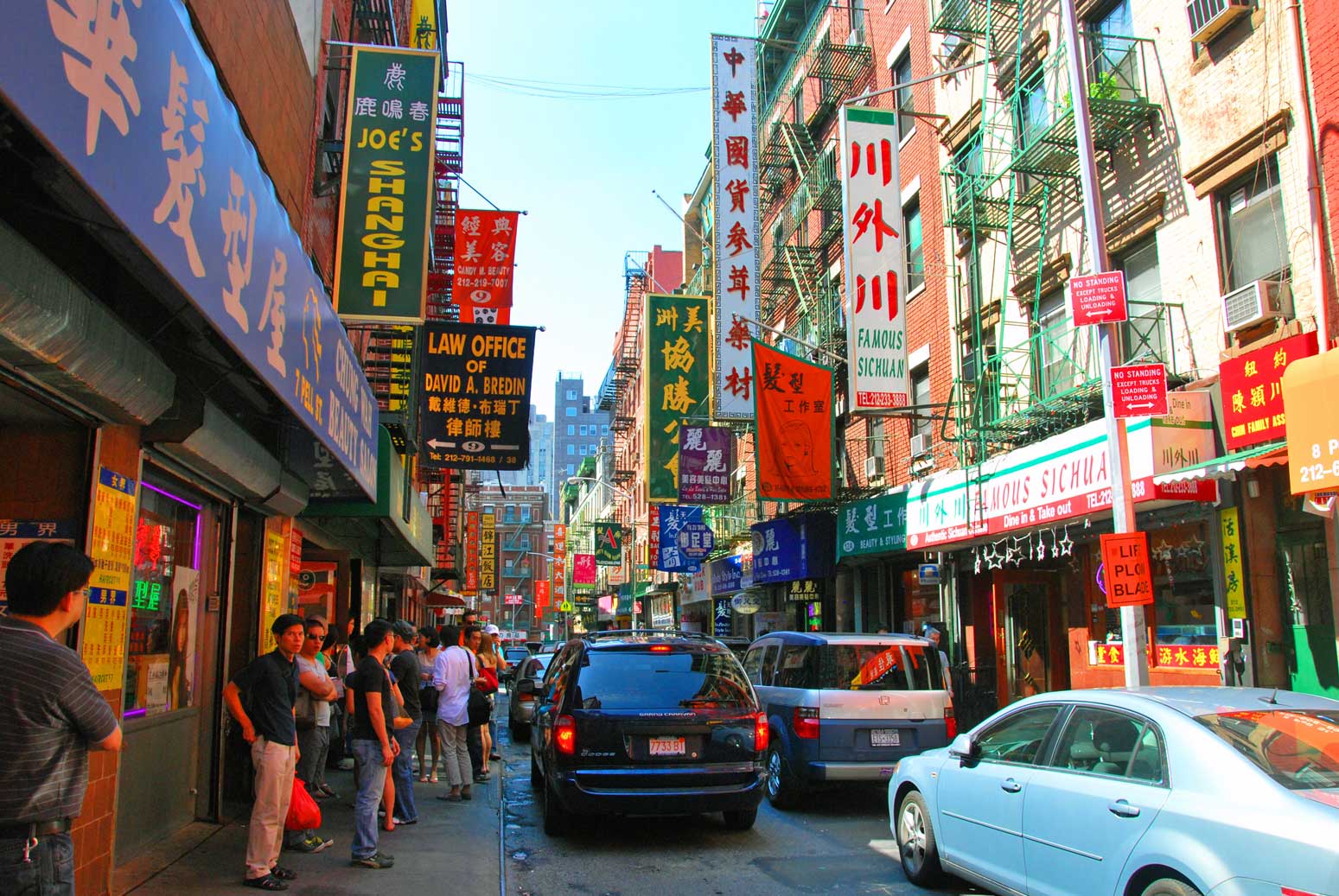
New York's Chinatown
The five boroughs of New York City are Manhattan, the Bronx, Brooklyn, Queens and Staten Island. There is a Chinatown with Buddhist temples, Little Italy and Roman Catholic cathedrals, synagogues and Jewish communities amongst many, many others.
It is in Manhattan that you find the Art Deco Rockefeller Centre, an extraordinary complex of offices, gardens, the NBC Studios and an observatory. Here, too, is the financiers’ world of Wall Street, the New York Stock Exchange and the bronze bull symbol in the Custom House. Surprisingly there is also a fresh produce market that is held in Union Square.
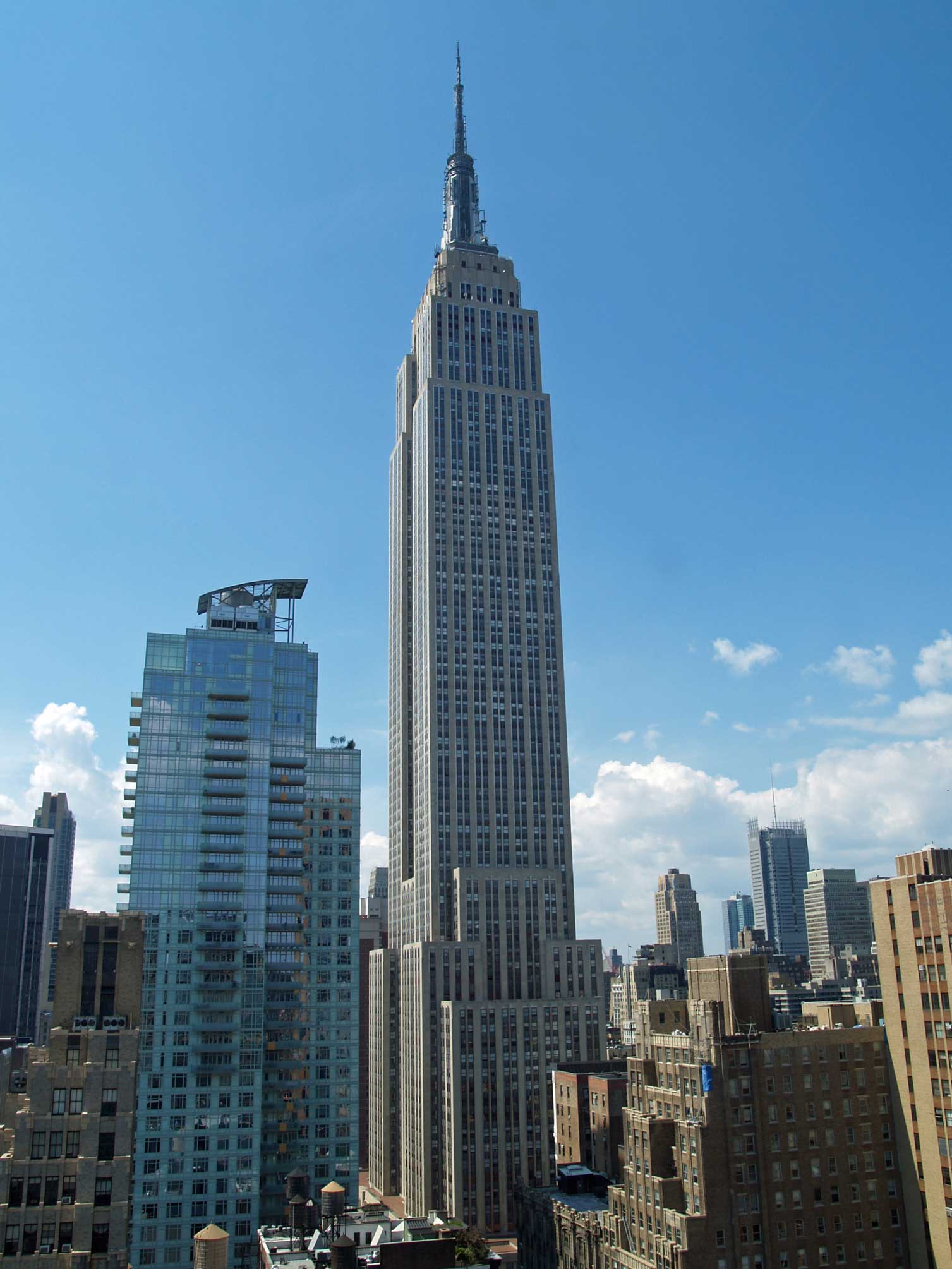
The Empire State Building
The Empire State Building stands 381 metres (1,250 feet) tall. You can take an elevator and travel as far as the 102nd floor. For the intrepid, however, in February a race is run up the 1,576 steps to the 86th floor – no mean feat at any pace, but this race calls for it to be accomplished in a mere ten minutes!
For luxury, head down Fifth Avenue in the shoes of the Astors and Vanderbilts, who once occupied this ‘Millionaires’ Row’ of palatial mansions. Running from the Empire State Building to Plaza Hotel on Grand Army Plaza, on Fifth Avenue you will find Saks and Cartier, Tiffany and Schwarz Toys among other revered names. Here, too, is the Flat Iron Building – New York’s first skyscraper.

Grand Central Terminal, New York
Grand Central Terminal, New York’s railway station, merits a visit for its remarkable architecture. The Grand Staircase leading from the light and airy arched window concourse was copied from the Grand Staircase in the Paris Opera House. The oyster bar still exists and a museum recalls the history of the railroads of America. Another architectural delight is the New York Public Library, in particular the Main Reading Room.
The Lincoln Centre for the Performing Arts, on Upper West Side, was built to accommodate the Metropolitan Opera and the New York Philharmonic Orchestra. This is an enormous complex that includes within it the Metropolitan Opera House and the New York State Theatre. The New York Philharmonic Orchestra, Metropolitan Opera and the New York City Ballet all perform here regularly, as do touring companies and artistes from all over the world.
Broadway is, of course, ‘Theatre Land’. The rest of the theatres are mainly located in side streets running off Times Square, and also in Brooklyn and Manhattan. ‘Hollywood East’ is the nickname given to TriBeCa because it has become the headquarters of the movie industry following Robert de Niro’s move into the area.
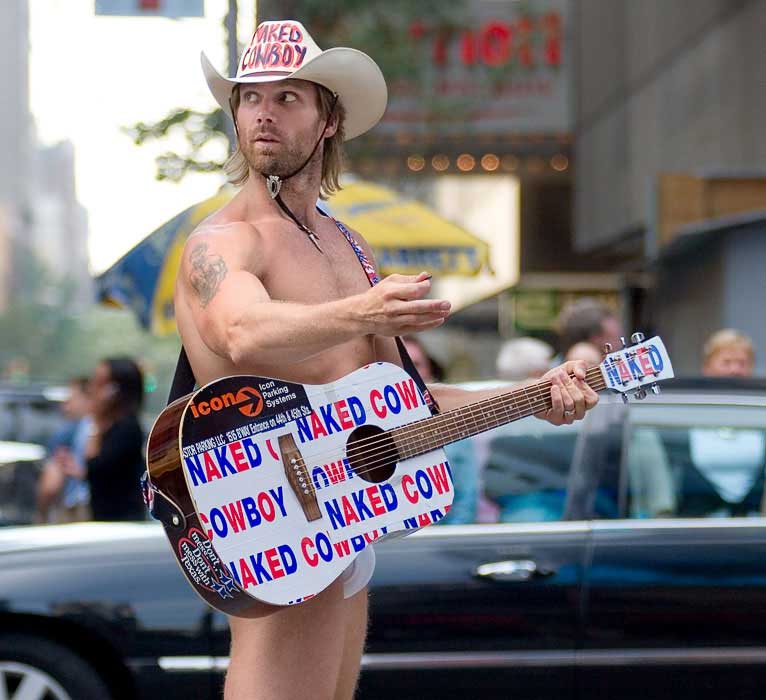
One of the Times Square attractions
Times Square is a busy intersection. The New York Times Tower is a landmark where, since 1906, the New Year is welcomed in.
Central Park is home to an ice rink, a zoo and a ramble for bird lovers. Children delight in the Hans Christian Andersen statue seated on his bench alongside a model duck, and in the Alice in Wonderland characters nearby. There is a memorial to John Lennon, who used to live close to the park, which is called Strawberry Fields.
Next to Central Park, the Guggenheim Museum is a must-see for art buffs. Carnegie Hall is also close to the park. The Metropolitan Museum of Art is to be found on 5th Street and the Museum of Modern Art on 53rd Street.
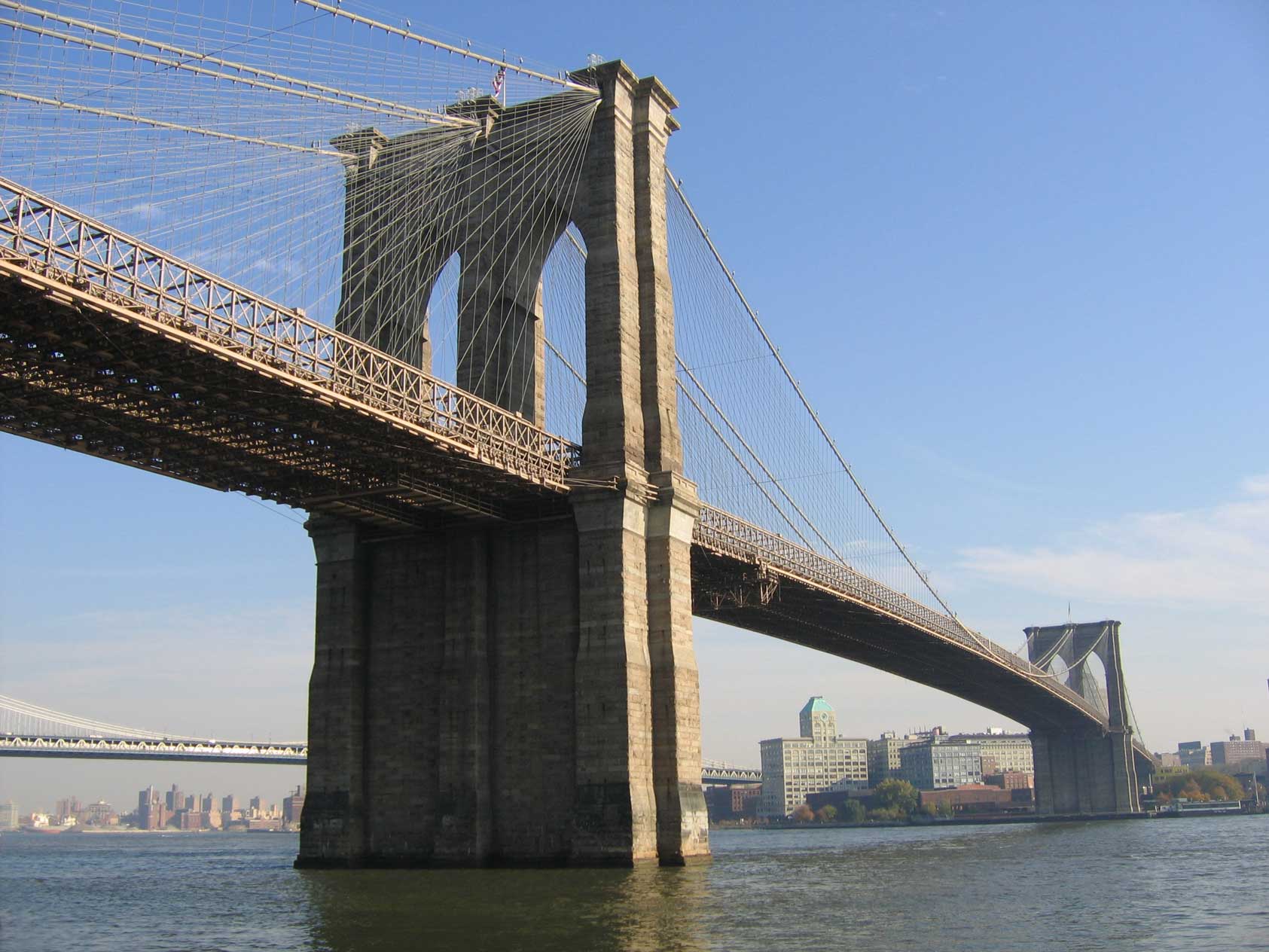
The Brooklyn Bridge
You can walk across the Brooklyn Bridge – the steel suspension bridge that was constructed in 1883 – which is well worth it for the incomparable views. Visit the zoo and New York Botanical Gardens in the Bronx, and go down to Sheridan Square in the centre of Greenwich Village to admire the ‘Old Jeff’ clock-towered Courthouse.
Harlem is where major black artists’ work is showcased at the Studio Museum, and this is a vibrant hub of musical activity and wonderful cooking smells.
Down on Long Island’s South Fork, The Hamptons and Montauk are home to celebrities, and Jones Beach State Park is where people escape the city for seaside and outdoor activity. Montauk Point has an octagonal stone lighthouse that is still in use.
Getting There
New York has three major airports: John F. Kennedy International Airport (best known as JFK), 29 kilometres (18 miles) from midtown Manhattan; La Guardia, 15 kilometres (9 miles) from midtown Manhattan; and Newark, 29 kilometres (18 miles) from midtown Manhattan.
For the latest information on visa requirements, visit www.projectvisa.com.
You may also like to read
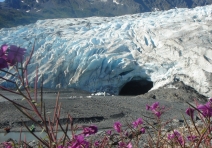
U.S.A. - Alaska
Tour-smart introduces you to the U.S. State of Alaska. Rugged, dramatic and unforgetable, it became the 49th State in 1959.
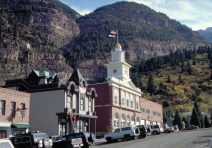
U.S.A. - Colorado
Tour-smart gives you the information that should tempt you to visit the western State of Colorado, a year round vacation magnet.
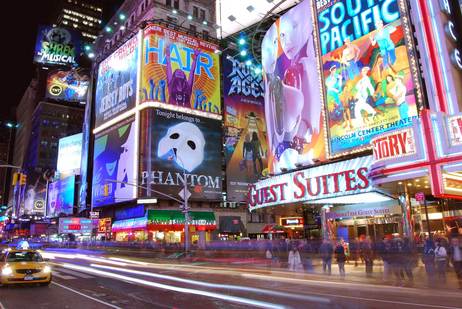
Comments